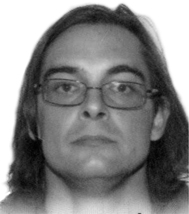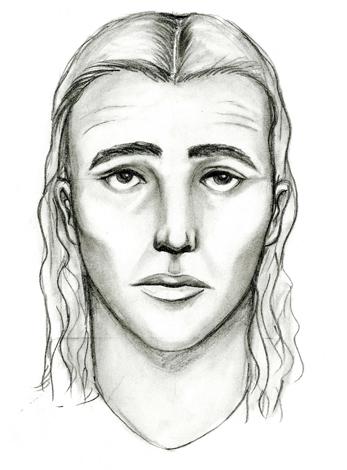
1976 - 2016
James Dale Ritchie
Summary
Name:
James Dale RitchieNickname:
The Midnight Sun Killer / TinyYears Active:
2016Birth:
November 04, 1976Status:
DeceasedClass:
Serial KillerVictims:
5Method:
ShootingDeath:
November 12, 2016Nationality:
USA
1976 - 2016
James Dale Ritchie
Summary: Serial Killer
Name:
James Dale RitchieNickname:
The Midnight Sun Killer / TinyStatus:
DeceasedVictims:
5Method:
ShootingNationality:
USABirth:
November 04, 1976Death:
November 12, 2016Years Active:
2016bio
James Dale Ritchie was born on November 4, 1976, and grew up in the Wonder Park neighborhood of Anchorage, Alaska. From a young age, he stood out physically, eventually reaching six feet three inches tall, and was recognized for his athletic ability. During high school at East Anchorage High, he played on both the state championship football and basketball teams in 1994, alongside future professional athletes Trajan Langdon and Mao Tosi. Ritchie was often in the company of the Thompson family, especially Quincy and Bobby Thompson, whose home became something like a second household for him during his teenage years.
His academic performance was promising; he scored 1200 on his SAT, which led to recruitment by West Virginia University’s football program. However, this opportunity emerged under a shadow: just a day before his recruitment, his friend Quincy Thompson passed away. The death appeared to mark the start of a gradual unraveling. He left Alaska for college but only lasted a semester before dropping out and returning home.
By the mid-1990s, Ritchie drifted into criminal activity, dealing drugs and becoming involved in dog fighting. He adopted the street name “Tiny” and built a reputation in Anchorage’s underworld. Arrest records from this period show multiple charges, nearly all tied to drugs and violent conduct. In 2005, he was arrested during a home invasion while armed with plastic handcuffs and handguns, leading to a two-year prison sentence.
When he was released, Ritchie remained in Alaska for a time but eventually moved to Virginia around 2013, where his parents were living. While there, he managed to keep out of legal trouble apart from minor moving violations. Police in Virginia described him as living quietly, with no incidents that drew significant attention.
After ending a relationship with his girlfriend in early 2016, Ritchie returned once again to Alaska. He retrieved the Colt Python revolver he had previously lent to an acquaintance. He lived in Anchorage, first in Airport Heights and later in the Penland Parkway trailer park. During this time, he reportedly sought mental health treatment, though it’s unclear if he ever received a diagnosis. Just months later, Anchorage would be shaken by a string of late-night killings committed with the same gun.
murder story
James Dale Ritchie’s killing spree began on July 3, 2016. In the early morning darkness along a bike path near Ship Creek, he approached 20-year-old Brianna Foisy and 41-year-old Jason Netter Sr. and shot them both. The pair’s bodies were discovered by a passing bicyclist around 7:45 a.m. Netter had a history of legal problems related to drugs and child support, while Foisy, who was homeless, struggled with addiction. The police could not confirm whether the two victims knew each other or were simply together by chance that night. Anchorage police ruled the deaths a double homicide and released images from surveillance cameras to try to identify anyone connected to the crime.
Nearly four weeks later, on July 29, Ritchie struck again. Just after 3 a.m., he targeted 21-year-old Treyveon-Kindell Thompson—coincidentally the son of his former friend Bobby Thompson. Treyveon was riding his bicycle home between Duben Avenue and Bolin Street. Witnesses, including three girls watching from a nearby window, later described seeing Ritchie lurking near the edge of the woods. After shooting Treyveon multiple times, Ritchie took the bicycle and rode it away, eventually bringing it to his home.
At the crime scene, police and investigators began to suspect a connection to the earlier killings. Ballistic analysis confirmed that the same Colt Python revolver had been used in both incidents. Despite this link, Ritchie was not yet on their radar as a suspect.

On August 28, 2016, he committed his final known murders. Around 1:42 a.m., a woman walking through Valley of the Moon Park found the body of 25-year-old environmental activist Bryant (Brie) De Husson lying along a trail. Minutes later, police located 34-year-old Kevin Turner’s body under the park pavilion. Turner, who had schizophrenia and bipolar disorder, was homeless at the time. Investigators concluded that De Husson may have simply been in the wrong place at the wrong time, likely encountering Ritchie as he was killing Turner.
The Alaska State Crime Lab tied the bullets back to the same Colt Python. The Anchorage Police Department and FBI began treating the murders as the work of a single individual, though they were cautious about releasing this information publicly for fear that the killer would destroy the weapon.
On November 12, 2016, Ritchie’s crime spree ended in violence downtown. Officer Arn Salao approached him to ask about an unrelated cab fare dispute. When Salao repeatedly told him to stop, Ritchie turned and fired without warning. Salao was struck six times but managed to return fire and engage Ritchie in a struggle. Sergeant Marc Patzke arrived and opened fire, killing Ritchie near the intersection of 5th Avenue and Cordova Street.
The Colt Python was recovered at the scene and confirmed as the murder weapon linking all five homicides. Investigators later disclosed that they had received at least one tip naming Ritchie, but he had never been formally considered a suspect until after his death. In April 2017, the Anchorage Police Department announced there was sufficient evidence to classify Ritchie as a serial killer and close the cases.